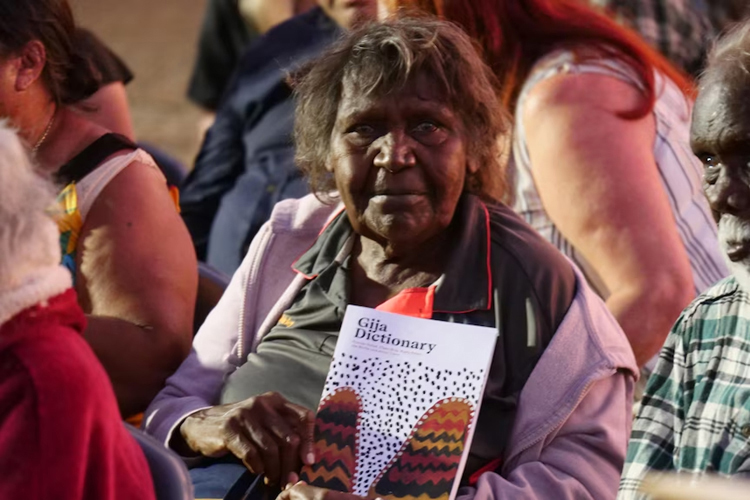On 3 May, the Warmun community came together to celebrate the launch of the Gija Dictionary. It was a celebration of the Gija language, and the community connected through speeches, ceremony, culture, and, most importantly, honoring the survival and continuation of language and culture.
Forty years of joint research have produced the Gija Dictionary – recording the traditional language of the East Kimberley region that extends north of Warmun (Turkey Creek) in the upper reaches of the Ord and Dunham rivers, east to the Purnululu National Park, south to Halls Creek, and west to Lansdowne and Tableland stations.
It is a landscape of weathered hills hugged by spinifex, startling rocky outcrops, hidden waterholes and dry riverbeds that turn to raging torrents in the wet season.
Published by Aboriginal Studies Press (ASP), the publishing arm of AIATSIS, the Gija Dictionary makes accessible the results of language research that has involved contributions from more than 80 people. It is a comprehensive record of the language that includes 248 pages of Gija descriptive word entries and 60-odd pages of cultural and grammatical information.
‘The Gija contributors are highly engaged in attempting to reinvigorate the language and to ensure that Gija culture remains strong and vibrant,’
says linguist Frances Kofod, who led the dictionary’s compilation with co-authors Eileen Bray (Warmun language teacher and artist), the late Rusty Peters (lawman, stockman, artist), Dr Joe Blythe and Anna Crane (linguists).
From the late 1800s, Gija people suffered devastating losses. Invading pastoralists brought cattle that damaged waterholes and devastated the ecosystem; fortune hunters chased gold at Halls Creek; government forced people onto cattle stations. In the late 1960s, when Aboriginal stockmen were granted equal wages, many were thrown off the land.
This second wave of dispossession saw Gija people move to Wyndham and Halls Creek and later Warmun (Warrmarn), where most Gija people still live today. Contributors to this dictionary included many well-known artists – including Mabel Juli and Shirley Purdie, and many others who have since passed away – who have used painting to pass on their linguistic knowledge.
This is the most comprehensive dictionary of the Gija language ever published and is a testament to the resilience of the Gija people – who, despite their history of loss, remain on their Country, living their culture, speaking their language.
‘This dictionary represents a major resource for community members in their efforts to maintain their language,’ Frances says. ‘It will form the backbone of language and cultural programs through the schools, ranger groups and the Warmun Art Centre. It will help to ensure that Gija is spoken well into the future.’
Buy the book from the AIATSIS shop.
We are thrilled to share this celebration of the Gija Dictionary launch event with you. The Warmun community celebrated and honoured the contributions made over so many years by Gija language speakers to the creation of this dictionary.
Media enquiries: Commsmedia@aiatsis.gov.au or SMS to 0476 843 522

